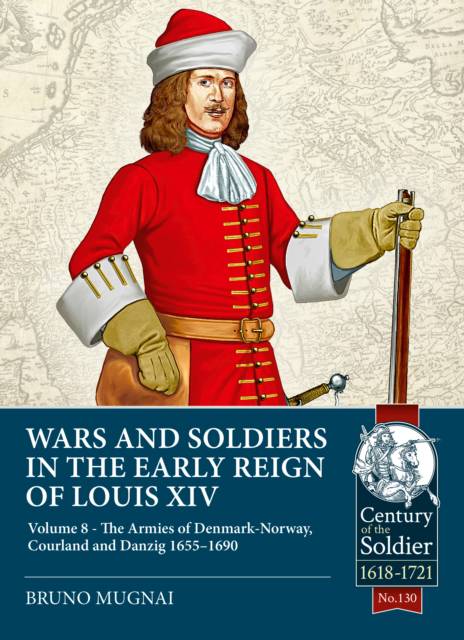
- Afhalen na 1 uur in een winkel met voorraad
- Gratis thuislevering in België vanaf € 30
- Ruim aanbod met 7 miljoen producten
- Afhalen na 1 uur in een winkel met voorraad
- Gratis thuislevering in België vanaf € 30
- Ruim aanbod met 7 miljoen producten
Zoeken
Wars and Soldiers in the Early Reign of Louis XIV
Volume 8: The Armies of Denmark-Norway, Courland and Danzig,1655-1690
Bruno Mugnai
€ 48,95
+ 97 punten
Omschrijving
Whatever names historians have given to the conflicts fought between Sweden and Denmark-Norway, and despite all the battles, sieges, winter campaigns, and guerrilla warfare, these events have often been viewed--within a broader European context--as taking place on the periphery. The struggle for dominance in Europe was not decided in some remote Hyperborean land, but rather in Flanders, the Rhineland, and the Mediterranean.
Nevertheless, even in Northern Europe, the wars left a deep imprint on society, affecting the economy, domestic policies, and diplomacy throughout the region. After its devastating wars against Poland, Russia, the Holy Roman Empire, Brandenburg, and the Netherlands, Sweden emerged as a major ally of Louis XIV. Both France and Sweden shared an interest in curbing the Netherlands' dominance as a seafaring and commercial power, while Denmark-Norway consistently found itself on the opposing side of this rivalry.
The Swedish army was still regarded by contemporaries as a model military force. Even after the reforms of Gustavus Adolphus, Swedish generals continued to develop new military doctrines, supported by a state administration capable of sustaining prolonged warfare. Equally significant was the political and military trajectory of Denmark, which--more than any other power during this period--stood on the front lines against the "Lion of the North."
This volume brings together the history, organization, equipment, uniforms, and ensigns of both armies, along with chapters dedicated to the Duchy of Courland and Royal City of Danzig.
Nevertheless, even in Northern Europe, the wars left a deep imprint on society, affecting the economy, domestic policies, and diplomacy throughout the region. After its devastating wars against Poland, Russia, the Holy Roman Empire, Brandenburg, and the Netherlands, Sweden emerged as a major ally of Louis XIV. Both France and Sweden shared an interest in curbing the Netherlands' dominance as a seafaring and commercial power, while Denmark-Norway consistently found itself on the opposing side of this rivalry.
The Swedish army was still regarded by contemporaries as a model military force. Even after the reforms of Gustavus Adolphus, Swedish generals continued to develop new military doctrines, supported by a state administration capable of sustaining prolonged warfare. Equally significant was the political and military trajectory of Denmark, which--more than any other power during this period--stood on the front lines against the "Lion of the North."
This volume brings together the history, organization, equipment, uniforms, and ensigns of both armies, along with chapters dedicated to the Duchy of Courland and Royal City of Danzig.
Specificaties
Betrokkenen
- Auteur(s):
- Uitgeverij:
Inhoud
- Aantal bladzijden:
- 296
- Taal:
- Engels
- Reeks:
Eigenschappen
- Productcode (EAN):
- 9781804515501
- Verschijningsdatum:
- 31/08/2025
- Uitvoering:
- Paperback
- Formaat:
- Trade paperback (VS)
- Afmetingen:
- 180 mm x 246 mm
- Gewicht:
- 748 g

Alleen bij Standaard Boekhandel
+ 97 punten op je klantenkaart van Standaard Boekhandel
Beoordelingen
We publiceren alleen reviews die voldoen aan de voorwaarden voor reviews. Bekijk onze voorwaarden voor reviews.








